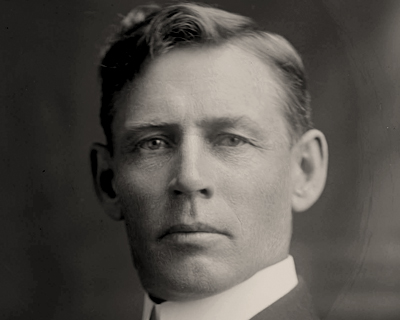Wikimedia Commons / CC-BY-SA-3.0 / GFDL
1 – Coup Ends Absolute Monarchy in Thailand
The Siamese Revolution of 1932 was a crucial turning point in 20th century Thai history.
The revolution, a coup d’état, was a nearly bloodless transition on 24 June 1932, which changed the system of government in Siam from an absolute monarchy to a constitutional monarchy.
It resulted in the people of Siam being granted their first constitution.
The revolution was brought about by a relatively small group of military and civilians, who formed Siam’s first political party, the Khana Ratsadon (Peoples’ Party).
It ended 150 years of absolutism under the Chakri Dynasty and almost 700 years of the absolute rule of kings over Thai history.
It was the product of global historical change, as well as domestic, social and political changes.
2 – Kingdom of Hejaz & Nejd Merge into Kingdom of Saudi Arabia

The Kingdom of Hejaz and Nejd, initially the Kingdom of Hejaz and Sultanate of Nejd, was a dual monarchy ruled by Ibn Saud following the victory of the Saudi Sultanate of Nejd over the Hashemite Kingdom of the Hejaz in 1925.
In 1932 the two kingdoms were unified as Saudi Arabia.
On 8 January 1926, Ibn Saud, the Sultan of Nejd, was crowned King of the Hejaz in the Masjid al-Haram in Makkah, and he elevated Nejd to the status of a kingdom on 29 January 1927.
At the Treaty of Jeddah on 20 May 1927, Ibn Saud’s realm was recognized by the United Kingdom of Great Britain and Northern Ireland and was addressed as the Kingdom of Hejaz and Nejd.
For the next five years, Ibn Saud administered the two parts of his dual kingdom as separate units.
On 23 September 1932, the main Saudi dominions of Al-Hasa, Qatif, Nejd and the Hejaz were unified as the Kingdom of Saudi Arabia.
3 – Charles Lindbergh’s Baby Son Kidnapped & Killed

Charles Lindbergh Jr. was the eldest son of aviator Charles Lindbergh and Anne Morrow Lindbergh. He was abducted from his family home on the evening of March 1, 1932.
Over two months later, on May 12, the body of the 20-month old toddler was discovered in Hopewell Township, a short distance from the Lindberghs’ hometown of Highfields, in East Amwell, New Jersey.
A medical examination determined that the cause of death was a massive skull fracture. After an investigation that lasted more than two years, Richard Hauptmann was arrested and charged with the crime.
In a trial that was held from January 2 to February 13, 1935, Hauptmann was found guilty of murder in the first degree and sentenced to death.
He was executed by electric chair at the New Jersey State Prison on April 3, 1936.
Hauptmann had proclaimed his innocence to the end, and many historians question his guilt. Newspaper writer H. L. Mencken called the kidnapping and subsequent trial “the biggest story since the Resurrection.”
The crime spurred Congress to pass the Federal Kidnapping Act, commonly called the “Lindbergh Law,” which made transporting a kidnapping victim across state lines a federal crime.
